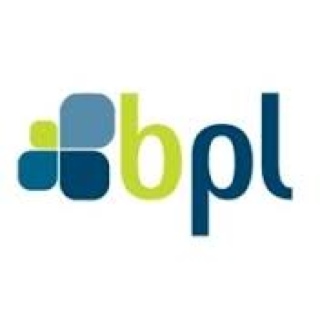Title Page
-
Document No. KAL HSA 1
-
Audit Title
-
Client / Site
-
Conducted on
-
Conducted by
-
Location
-
Personnel
Pool Plant Rooms
-
Does the facility operate a pool plant room(s)?
-
PPE is compatible e.g. RPE doesn’t inhibit the wearing of eye protection.
-
PPE is subject to periodic inspection and maintenance by a competent person.
-
PPE is suitable for the tasks being undertaken and not just the chemical hazards, e.g. are gloves suitable for detailed technical tasks such as dismantling injector points, and so do not increase overall risk.
-
There are the means for an operator to summon aid to the plant room, e.g. telephone, assistance alarm.
-
There is a drench shower/means of dousing an operator (if required) and an eye wash station.
-
The drench shower is tested and safely flushed on a weekly basis.
-
There is a first aid kit with appropriate contents.
Management
-
There are written safety procedures for the operation of the water treatment systems. These include operating instructions and maintenance instructions. These are subject to planned periodic review?
-
There are suitable risk assessments for all operations including COSHH risk assessments that accurately reflect all routine and non- routine operations e.g. stripping down injectors.
-
There are records of pool water tests, including balanced water tests and the monthly bacteriological testing of water. Pool water is tested regularly throughout the day (suggested 3 times per day where there is additional automatic monitoring and systems and every two hours where dosing is manual).
-
There are records of any maintenance to the pool plant or pool structure, e.g. inspection of filter media, cleaning of balance tanks.
-
The room is kept clean and tidy with no storage of equipment from other parts of the building.
-
Floors are in good condition, excess water is removed via a sump pump, the room is well lit and any protruding hazards at head height are highlighted and cushioned if necessary.
-
The room is always kept secure?
Competence
-
All staff operating water treatment systems are trained, qualified, supervised and judged competent to do so. Certificates are maintained on file.
-
There is a written procedure for faecal fouling and staff are trained and conversant with it.
-
Staff are trained in both routine and non-routine procedures, e.g. what to do when water is out of parameter or part of the treatment system fails.
Water Treatment - Filtration
-
The condition of the filter media is inspected annually.
-
The filter media is changed as required to maintain efficiency of filtration (normally 5-7 years).
-
There is a flow meter fitted within the pipe work to allow accurate measurement of flow rates and calculation of the turnover period (essential when dealing with diarrhoeal fouling).
-
There is a written procedure for backwashing in which operators are trained. This allows backwashing until the sight glass runs clear rather than just to a time constraint. It also requires backwashing when the circulation has been off for any appreciable time.
-
Filters are backwashed weekly or when the pressure loss across the filter reaches the manufacturer's guidance for backwashing.
-
Backwashing is carried out to minimise effect on users or at the end of the day to allow the filter to reach greatest efficiency overnight ready for the following day’s pollution, for any drop in pool water level not to create a hazard, and for the water level to return to normal.
Water Treatment - Disinfection
-
The pH of the pool water is controlled to optimise the effectiveness of the disinfectant.
-
Dilution with fresh water (suggested 30 litres per bather) is sufficient to keep levels of combined chlorine low. Are levels of combined chlorine high first thing in the morning?
-
Control of disinfection is good, maintaining a free chlorine/disinfectant residual in the pool and operating at breakpoint chlorination.
-
There is automatic monitoring of chlorine/disinfectant levels and the pH with automatic chemical dosing. This is backed up with manual water testing at least three times per day. Monitoring probes are cleaned as per manufacturer’s guidance and the system calibrated as required.
-
Where there isn’t automatic monitoring, water tests are undertaken before the pool opens, every 2 hours during operation and after it closes.
-
Manual pool water testing kits are scrupulously clean.
-
Hand dosing is avoided; but where necessary strictly controlled and to ISRM guidance.
-
The disinfectant is dosed/located pre filter.
-
The pH balancer (normally acid) is dosed post filter and away from the heat exchanger. The injector point is a minimum of 1m away from the disinfectant dosing point.
-
All injector points, chemical lines and storage tanks are clearly labelled with their contents.
-
Where chemical lines are under pressure and at eye level, they are sheathed.
-
Automatic dosing has a failsafe mechanism so that in the event of failure of the circulation, chemicals cease to be dosed.
-
Where CO2/chlorine gas/ozone systems are used, there are gas monitors in place which are subject to regular testing.
Water Treatment - Chemical Delivery
-
There is sufficient space for delivery vehicles to manoeuvre and park off the public highway.
-
Deliveries are always accepted and supervised by a competent member of staff.
-
The need for PPE has been considered in the COSHH assessment.
-
Where individual containers are delivered and there is a risk of injury, this has been subject to a manual handling assessment.
-
Chemicals are stored in their original containers wherever possible. Other day-tanks etc. are clearly and conspicuously marked with their contents.
-
Storage areas are segregated where chemicals are incompatible.
-
Quantities stored are realistic for the use and not excessive.
-
Storage areas are secure from unauthorised access and clearly labelled with their contents. They are adequately ventilated where required.
-
Bags of dry chemicals are stored off the floor.
-
Empty chemical containers are treated as hazardous waste and disposed of correctly via a licensed carrier. The site is registered as a producer of hazardous waste where necessary.
Water Treatment - PPE
-
PPE supplied is personal issue (where appropriate) or there are means to clean/decontaminate it between users (sharing possible where use is only short term, occasional or no skin contact e.g. aprons).
-
PPE is available close to the point of use and is stored to protect it from contamination (especially important with respiratory PPE).
-
Filter cartridges on Respiratory Protective Equipment (RPE) are suitable for the chemical hazards. Check the expiry date on cartridges.
-
The RPE has been chosen because it fits the users and users have been trained in its use.












